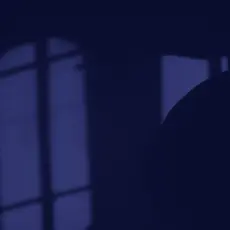While reparative therapy, which intends to make gay and bisexual people straight, has already been thoroughly discredited and rejected by the American Psychological Association, among others, a new study from Pat Robertson’s Regent University may also shed doubts on the ability of people to transform from gay to straight. Warren Throckmorton points to a study by Regent University, “Characteristics of Mixed Orientation Couples: An Empirical Study” [pdf] in the Christian psychological periodical Edification, that may deal a heavy blow to the popular right-wing argument that people can just change their sexual orientation.
Pat Robertson, one of the country’s most prominent and harshest critics of gay rights and the LGBT community, is the founder and chancellor of Regent, which was originally named CBN University after his Christian Broadcasting Network.
A study from two Regent professors and four Regent doctoral candidates undermines a common refrain from the Religious Right that gays and lesbians can simply marry people of the opposite sex and become heterosexual. Many endorse “reparative therapy” for gays and lesbians, such as the ‘ex-gay’ counseling practiced at the clinic run by Rep. Michele Bachmann’s husband.
The group surveyed people currently or once involved in mixed orientation marriages, or one spouse who identifies as heterosexual and an opposite-sex partner who identifies as a sexual minority (like gay, lesbian, bisexual, queer or bi-curious).
The researchers used two versions of the Kinsey scale (0 as completely heterosexual, 7 as completely homosexual) to measure both sexual behavior and sexual orientation. Unsurprisingly, they found on the Kinsey scale that measured sexual behavior that gay, bisexual or queer spouses had more heterosexual behavior when they were involved in a monogamous marriage to someone of the opposite sex. But they found that heterosexual behavior did not mean changes in sexual attraction, emotions or fantasies in the Kinsey scale (Kinsey Expanded) which measured sexual orientation. Essentially, while their sexual behavior changed, their sexual orientation remained the same:
On the Kinsey Expanded version, the mean score for both before marriage and the current assessment were 4.33 and 4.57 respectively. Both of these scores fall in between the Equal amounts of heterosexual and homosexual and Largely homosexual, but more than incidental heterosexual categories.
A paired-sample t-test was conducted to determine if there was a significant difference in their Kinsey scores before marriage and currently. There was a significant difference in their Kinsey behavior scale scores, indicating the sample’s sexual behavior significantly shifted toward the exclusively heterosexual side of the continuum since they have been married. This is likely simply a result of the fact that most of the participants were in a heterosexual marriage, thus decreasing the frequency of same-sex behavior. On the Kinsey Expanded scale, there was not a significant difference between their ratings before marriage and currently, suggesting there has been little change in their degree of overall sexual orientation (attractions, behavior, emotional attachment, and fantasy).
…
When we look at the sexual minorities specifically, it is noteworthy that the findings from the Kinsey scale suggest that they did report significant behavioral change. This likely reflected the commitment to their heterosexual marriage and the decrease in frequency of same-sex behavior. However, when the Kinsey expanded scale was administered, sexual minorities did not report a statistically significant change in the combination of behaviors, attraction, fantasy, and emotional attachment – the combination meant to convey sexual orientation rather than just behavior.






